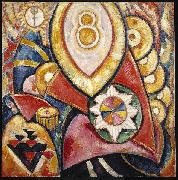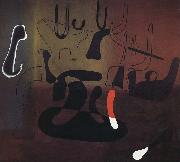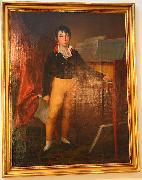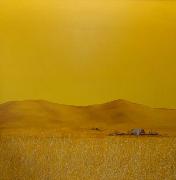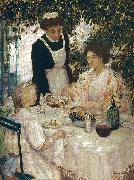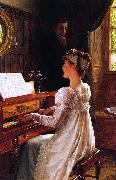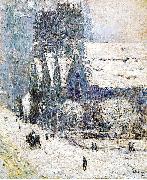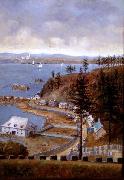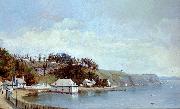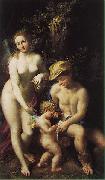Wholesale Oil Painting No Minimum |
|||||||||||
|
|
|||||||||||

|
|||||||||||
|
|
|
||||||||
Marsden Hartley1877-1943 Marsden Hartley (January 4, 1877 - September 2, 1943) was an American Modernist painter and poet in the early 20th century. Hartley was born in Lewiston, Maine, USA. He began his art training at the Cleveland Institute of Art after moving to Cleveland, Ohio in 1892. At the age of 22, he moved to New York City, where he attended the National Academy of Design and studied painting at the Art Students League of New York under William Merritt Chase. A great admirer of Albert Pinkham Ryder, Hartley would visit Ryder's studio in Greenwich Village as often as possible. While in New York, he came to the attention of Alfred Stieglitz and became associated with Stieglitz' 291 Gallery Group. Hartley had his first major exhibition at the 291 Gallery in 1909 and another in 1912. He was in the cultural vanguard, in the same milieu as Gertrude Stein, Hart Crane, Charles Demuth, Georgia O'Keeffe, Fernand Leger, Ezra Pound, among many others. Hartley, who was gay, painted Portrait of a German Officer (1914), which was an ode to Karl von Freyburg, a Prussian lieutenant of whom he became enamored before von Freyburg's death in World War I. |
||||||||
|
|
||||||||
Painting
Painting Painting ID:: 70393 |
Medium Oil on canvas
Dimensions Expression error: Missing operand for *119.9 ?? 119.9 cm
Medium Oil on canvas Dimensions Expression error: Missing operand for *119.9 ?? 119.9 cm |
|||||||
|
|
||||||||
Nicolas de StaelRussian Painter.1914-1955 was a painter known for his use of a thick impasto and his highly abstract landscape painting. He also worked with collage, illustration and textiles Nocolas de Stael was born in the family of a Russian Lieutenant General, Baron Vladimir Stael von Holstein, (a member of the Stael von Holstein family, and the last Commandant of the Peter and Paul Fortress) and his wife, Olga Sakhanskaya. De Stael's family was forced to emigrate to Poland in 1919 because of the Russian Revolution; Both, his father and stepmother, would die in Poland and the orphaned Nicolas de Stael would be sent with his older sister Marina to Brussels to live with a Russian family (1922). He eventually studied art at the Brussels Acad??mie royale des beaux-arts (1932). In the 1930s, he travelled throughout Europe, lived in Paris (1934) and in Morocco (1936) (where he first met his companion Jeannine Guillou, also a painter and who would appear in some of his paintings from 1941-1942) and Algeria. In 1936 he had his first exhibition of Byzantine style icons and watercolors at the Galerie Dietrich et Cie, Brussels. He joined the French Foreign Legion in 1939 and was demobilized in 1941. |
||||||||
|
|
||||||||
|
|
Painting
Painting Painting ID:: 35898 |
mk107
1947
Oil painting
195.6x97.5cm
mk107 1947 Oil painting 195.6x97.5cm |
||||||
|
|
||||||||
|
|
||||||||
|
|
Painting
Painting Painting ID:: 57006 |
mk250 Year in 1933. 172.7 x 195.6 cm. New York Museum of Modern Art. mk250 Year in 1933. 172.7 x 195.6 cm. New York Museum of Modern Art. |
||||||
|
|
||||||||
|
|
||||||||
|
|
Painting
Painting Painting ID:: 67459 |
Description MIM Painting.jpg
English: Painting of a composer (?) as a child at the MIM, Berlin. Description MIM Painting.jpg English: Painting of a composer (?) as a child at the MIM, Berlin. |
||||||
|
|
||||||||
Almeida Junior(8 May 1850 ?C 13 November 1899) was a Brazilian painter of the 19th century. He is widely regarded as the most important Brazilian realist painter of the 19th century, and a major inspiration for the modernist painters. While most Brazilian academic artists made their fame painting mythological or historical subjects, Almeida Junior would become popular for painting rural figures, especially farmers and the caipira, the countrymen that are a kind of a symbol of the rural areas of the São Paulo state. While most realist painters used farmers and countrymen as an allegory of workers, Almeida Junior would paint his caipiras mostly on leisure time. He would also produce touching images of upscale landowners. The Bandeirantes, the ruthless explorers of colonial Brazil, would be depicted in the A partida da monção, showing an expedition on the Tiet?? River. Almeida Junior was born in the city of Itu, then a small town in the state of São Paulo. After becoming a sensation in his town he would be invited to study in the Brazilian Imperial Fine Arts Academy of Rio de Janeiro, but in 1876 would study in France after being granted a scholarship by emperor Pedro II of Brazil in person in the city of Moji-Mirim. He would have Alexandre Cabanel as one of his masters. He admired the French realist and naturalist painting (a major influence at his work), and, after returning to Brazil in 1882, became of the leading names in Brazilian realist painting. He was stabbed to death by the husband of his mistress on November 13, 1899 in Piracicaba. |
||||||||
|
|
||||||||
|
|
Painting
Painting Painting ID:: 68632 |
Technique Oil on canvas
Dimensions 250 ?? 125 cm
Technique Oil on canvas Dimensions 250 ?? 125 cm |
||||||
|
|
||||||||
Almeida Junior(8 May 1850 ?C 13 November 1899) was a Brazilian painter of the 19th century. He is widely regarded as the most important Brazilian realist painter of the 19th century, and a major inspiration for the modernist painters. While most Brazilian academic artists made their fame painting mythological or historical subjects, Almeida Junior would become popular for painting rural figures, especially farmers and the caipira, the countrymen that are a kind of a symbol of the rural areas of the São Paulo state. While most realist painters used farmers and countrymen as an allegory of workers, Almeida Junior would paint his caipiras mostly on leisure time. He would also produce touching images of upscale landowners. The Bandeirantes, the ruthless explorers of colonial Brazil, would be depicted in the A partida da monção, showing an expedition on the Tiet?? River. Almeida Junior was born in the city of Itu, then a small town in the state of São Paulo. After becoming a sensation in his town he would be invited to study in the Brazilian Imperial Fine Arts Academy of Rio de Janeiro, but in 1876 would study in France after being granted a scholarship by emperor Pedro II of Brazil in person in the city of Moji-Mirim. He would have Alexandre Cabanel as one of his masters. He admired the French realist and naturalist painting (a major influence at his work), and, after returning to Brazil in 1882, became of the leading names in Brazilian realist painting. He was stabbed to death by the husband of his mistress on November 13, 1899 in Piracicaba. |
||||||||
|
|
||||||||
|
|
Painting
Painting Painting ID:: 70923 |
Medium Oil on canvas
Dimensions 250 x 125 cm
Medium Oil on canvas Dimensions 250 x 125 cm |
||||||
|
|
||||||||
David Maitland Armstrong1836-1918 |
||||||||
|
|
||||||||
|
|
Painting
Painting Painting ID:: 77189 |
Armstrong Oil on Canvas
Date Unknown date
cyf Armstrong Oil on Canvas Date Unknown date cyf |
||||||
|
|
||||||||
E.Phillips FoxAustralian Naturalist Painter, 1865-1915 Australian painter and teacher. From 1878 to 1886 he trained at the National Gallery of Victoria Art Schools, Melbourne, and in 1887 left to study in Europe. In Paris he attended the Academie Julian and was taught by Jean-Leon Gereme at the Ecole des Beaux-Arts and by the American artist T. Alexander Harrison (1853-1930). He was involved with the plein-air artists at Etaples, Pas-de-Calais, and in Brittany and also visited Giverny, where from 1883 Monet was living. By 1890 he had moved to England, to the artists' colony at St Ives, Cornwall. In 1892 he returned to Melbourne where he chiefly painted portraits and landscapes. He was a member of the Victorian Artists' Society, exhibiting with them between 1892 and 1900. In 1893 he established the lively Melbourne Art School with Tudor St George Tucker (1862-1906). There an academic training coupled with a modified Impressionist technique was taught, as can be seen in Fox's painting the Art Students . In 1901 he left for London, having been commissioned by the Trustees of the National Gallery of Victoria to paint the Landing of Captain Cook at Botany Bay. After his marriage in 1905 to the artist Ethel Carrick, he and his wife settled in Paris and remained there until 1913. |
||||||||
|
|
||||||||
|
|
Painting
Painting Painting ID:: 79793 |
oil on canvas canvas canvas 151.6 (h) x 112.6 (w) cm
cyf oil on canvas canvas canvas 151.6 (h) x 112.6 (w) cm cyf |
||||||
|
|
||||||||
Edmund Blair Leighton1853-1922 British Leighton was the son of the artist Charles Blair Leighton. He was educated at University College School, before becoming a student at the Royal Academy Schools. He married Katherine Nash in 1885 and they went on to have a son and daughter. He exhibited annually at the Royal Academy from 1878 to 1920. Leighton was a fastidious craftsman, producing highly-finished, decorative pictures. It would appear that he left no diaries, and though he exhibited at the Royal Academy for over forty years, he was never an Academician or an Associate. |
||||||||
|
|
||||||||
|
|
Painting
Painting Painting ID:: 79965 |
oil on canvas
Date 1903
cyf oil on canvas Date 1903 cyf |
||||||
|
|
||||||||
Childe Hassam1859-1935 Childe Hassam Locations Frederick Childe Hassam (b. October 17, 1859, Dorchester, Boston, Massachusetts ?C d. August 27, 1935, East Hampton, New York) was a prominent and prolific American Impressionist painter, noted for his urban and coastal scenes. Along with Mary Cassatt and John Henry Twachtman, Hassam was instrumental in promulgating Impressionism to American collectors, dealers, and the museums. He produced over 3,000 paintings, watercolors, etchings, and lithographs in his career, and was a founding member of The Ten, an influential group of American artists of the early 20th century. His most famous works are the ??Flag?? paintings, completed during World War I. Hassam (pronounced HASS'm;) (known to all as Childe, pronounced like child) was born in his family home in a suburb of Boston in 1859. His father Frederick was a cutlery merchant and descended from a long line of New Englanders, while his mother Rosa was a native of Maine. He demonstrated an interest in art early in his life. He had his first lessons in drawing and watercolor while attending the Mather public school, but his parents took little notice of his nascent talent. A disastrous fire in November 1872 wiped out much of Boston??s commercial district including his father??s business. To help out the family, Hassam dropped out of high school and his father lined up a job for him in the accounting department of publisher Little Brown & Company. His poor aptitude for figures, however, convinced his father to allow him to pursue an art career, and Hassam found employment with George Johnson, a wood engraver. He quickly proved an adept draftsman (??draughtsman?? in the Boston directory) and he produced designs for commercial engravings, such as images for letterheads and newspapers. Around 1879, Hassam began creating his earliest oil paintings but his preferred medium was watercolors, mostly outdoor studies. |
||||||||
|
|
||||||||
|
|
Painting
Painting Painting ID:: 82294 |
Date 1893
cyf Date 1893 cyf |
||||||
|
|
||||||||
Henry Richard S. Bunnett1845 -1910 David Ross McCord (1844-1930) commissioned Henry Richard S. Bunnett (1845-1910) to paint over 200 oil paintings between 1885 and 1889. The works depicted buildings, views and places around Quebec that McCord felt were of historical importance. |
||||||||
|
|
||||||||
|
|
Painting
Painting Painting ID:: 83343 |
Oil on canvas, 36 x 26 cm
cyf Oil on canvas, 36 x 26 cm cyf |
||||||
|
|
||||||||
Henry Richard S. Bunnett1845 -1910 David Ross McCord (1844-1930) commissioned Henry Richard S. Bunnett (1845-1910) to paint over 200 oil paintings between 1885 and 1889. The works depicted buildings, views and places around Quebec that McCord felt were of historical importance. |
||||||||
|
|
||||||||
|
|
Painting
Painting Painting ID:: 83373 |
Oil on canvas, 24.5 x 35 cm
cyf Oil on canvas, 24.5 x 35 cm cyf |
||||||
|
|
||||||||
CorreggioItalian 1489-1534 Correggio Locations Italian painter and draughtsman. Apart from his Venetian contemporaries, he was the most important northern Italian painter of the first half of the 16th century. His best-known works are the illusionistic frescoes in the domes of S Giovanni Evangelista and the cathedral in Parma, where he worked from 1520 to 1530. The combination of technical virtuosity and dramatic excitement in these works ensured their importance for later generations of artists. His altarpieces of the same period are equally original and ally intimacy of feeling with an ecstatic quality that seems to anticipate the Baroque. In his paintings of mythological subjects, especially those executed after his return to Correggio around 1530, he created images whose sensuality and abandon have been seen as foreshadowing the Rococo. Vasari wrote that Correggio was timid and virtuous, that family responsibilities made him miserly and that he died from a fever after walking in the sun. He left no letters and, apart from Vasari account, nothing is known of his character or personality beyond what can be deduced from his works. The story that he owned a manuscript of Bonaventura Berlinghieri Geographia, as well as his use of a latinized form of Allegri (Laetus), and his naming of his son after the humanist Pomponius Laetus, all suggest that he was an educated man by the standards of painters in this period. The intelligence of his paintings supports this claim. Relatively unknown in his lifetime, Correggio was to have an enormous posthumous reputation. He was revered by Federico Barocci and the Carracci, and throughout the 17th and 18th centuries his reputation rivalled that of Raphael. |
||||||||
|
|
||||||||
|
|
Painting
Painting Painting ID:: 84911 |
1489-1534. Around 1522. Oil on canvas
cyf 1489-1534. Around 1522. Oil on canvas cyf |
||||||
|
|
||||||||
|
Correggio Italian 1489-1534 Correggio Locations Italian painter and draughtsman. Apart from his Venetian contemporaries, he was the most important northern Italian painter of the first half of the 16th century. His best-known works are the illusionistic frescoes in the domes of S Giovanni Evangelista and the cathedral in Parma, where he worked from 1520 to 1530. The combination of technical virtuosity and dramatic excitement in these works ensured their importance for later generations of artists. His altarpieces of the same period are equally original and ally intimacy of feeling with an ecstatic quality that seems to anticipate the Baroque. In his paintings of mythological subjects, especially those executed after his return to Correggio around 1530, he created images whose sensuality and abandon have been seen as foreshadowing the Rococo. Vasari wrote that Correggio was timid and virtuous, that family responsibilities made him miserly and that he died from a fever after walking in the sun. He left no letters and, apart from Vasari account, nothing is known of his character or personality beyond what can be deduced from his works. The story that he owned a manuscript of Bonaventura Berlinghieri Geographia, as well as his use of a latinized form of Allegri (Laetus), and his naming of his son after the humanist Pomponius Laetus, all suggest that he was an educated man by the standards of painters in this period. The intelligence of his paintings supports this claim. Relatively unknown in his lifetime, Correggio was to have an enormous posthumous reputation. He was revered by Federico Barocci and the Carracci, and throughout the 17th and 18th centuries his reputation rivalled that of Raphael. Painting 1489-1534. Around 1522. Oil on canvas cyf |
||||||||
|
|
||||||||
|
Prev Next
|
||||||||
|
|
||||||||
|
Related Paintings to Correggio :. |
||||||||
|
|
||||||||
|
CONTACT US |
